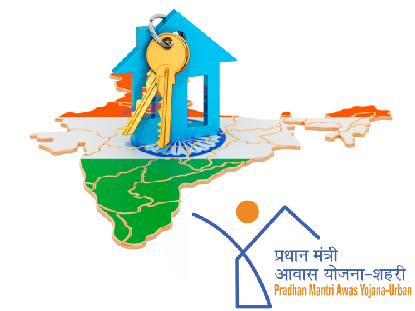Meenakshi Taheem
.jpg)
6 mins read
Last updated on 9th September 2024
Housing is a fundamental human need, yet millions across the world still live without secure and adequate shelter. In India, this challenge is particularly acute among the economically weaker sections (EWS) of society. Recognizing the need for a robust solution, the Government of Kerala launched the LIFE (Livelihood, Inclusion, and Financial Empowerment) Mission in 2017. This ambitious project aims to provide every homeless and landless family in Kerala with a permanent house, thereby improving their quality of life and ensuring their socio-economic upliftment. As of 2024, the LIFE Mission Kerala has become a beacon of hope for many, with substantial progress made towards achieving its goals. This blog delves into the objectives, progress, challenges, and future prospects of the LIFE Mission in 2024.
The Vision and Objectives of LIFE Mission Kerala
The LIFE Mission Kerala was designed with a clear set of objectives aimed at addressing the housing crisis in the state:
- Providing Secure Housing: The mission's primary goal is to ensure that every family in Kerala, irrespective of their socio-economic status, has access to a permanent and secure house. This is particularly focused on the homeless and landless families who have been marginalized for years.
- Promoting Sustainable Development: The houses built under the LIFE Mission are designed to be sustainable, with a focus on eco-friendly construction practices. This includes the use of local materials, energy-efficient designs, and features such as rainwater harvesting and solar panels.
- Financial Empowerment: Beyond housing, the mission aims to integrate livelihood programs with the provision of homes. This approach ensures that beneficiaries are not just provided with shelter but are also empowered to sustain their livelihoods.
- Inclusion: The mission prioritizes the most vulnerable groups in society, including women-headed households, the elderly, differently-abled individuals, and socially backward communities. This inclusive approach ensures that the benefits of the scheme reach those who need it the most.
- Key Features of LIFE Mission Kerala in 2024
- As the LIFE Mission Kerala enters 2024, several key features and innovations have been introduced to enhance its effectiveness:
- Green and Sustainable Housing: A significant focus is placed on sustainability. The houses are designed to be energy-efficient, using locally sourced materials, solar power, and rainwater harvesting systems. This approach not only reduces the carbon footprint but also lowers the long-term maintenance costs for the beneficiaries.
- Online Registration and Application Process: To streamline the process and ensure transparency, the mission has introduced an online platform for registration and application. The LIFE Mission Kerala online registration portal allows eligible families to apply for housing schemes from the comfort of their homes. The platform is user-friendly and provides step-by-step guidance on how to complete the registration and application process.
- Monitoring and Evaluation Through Technology: The mission employs advanced technology, including Geographic Information Systems (GIS) and digital monitoring tools, to track the progress of housing projects. This ensures that construction is completed on time and that the houses meet the required quality standards.
- Convergence with Other Government Schemes: The LIFE Mission Kerala has successfully integrated with other state and central government schemes. This convergence allows for the pooling of resources and enhances the overall impact of the mission. For example, the mission is linked with the Pradhan Mantri Awas Yojana (PMAY) and the Mahatma Gandhi National Rural Employment Guarantee Scheme (MGNREGS), ensuring that beneficiaries receive comprehensive support.
- Community Participation: The mission actively involves local communities in the planning and construction processes. This participatory approach ensures that the houses are culturally appropriate and meet the specific needs of the beneficiaries.
- Focus on Vulnerable Groups: Special emphasis is placed on providing housing for the most vulnerable sections of society, including tribal communities, coastal populations, and those affected by natural disasters. The mission also prioritizes women-headed households, ensuring gender equity in the allocation of houses.
How to Apply: LIFE Mission Online Registration Process
For those interested in availing the benefits of the LIFE Mission Kerala, the online registration process is straightforward:
- Eligibility Check: Before starting the LIFE Mission online registration, applicants must ensure they meet the eligibility criteria. The scheme is targeted at homeless and landless families in Kerala, with special consideration for vulnerable groups.
- Filling Out the Application: Applicants can access the LIFE Mission Kerala online registration portal through the official website. The portal provides detailed instructions on how to fill out the LIFE Mission online application. Applicants need to provide personal details, income information, and documents proving their eligibility.
- Submission and Tracking: Once the application is submitted, it undergoes a verification process. Applicants can track the status of their application online. The system is designed to be transparent, allowing applicants to know exactly where their application stands at any given time.
- Selection and Allotment: After verification, eligible families are selected based on predefined criteria, and the allotment of houses is done transparently. The mission gives priority to the most vulnerable groups, ensuring that those in the greatest need receive assistance first.
Eligibility Criteria for LIFE Mission Housing Scheme 2024
To qualify for a house under the LIFE Mission Housing Scheme 2024, applicants must meet the following conditions:
- The applicant must be a resident of Kerala.
- The applicant, as well as all members listed on the ration card, should not own any land.
- The annual income of the applicant should not exceed Rs 3 lakh.
- Government sector employees are ineligible to apply.
- The applicant must possess a ration card issued by the state of Kerala.
- Preference is given to individuals from Scheduled Tribes, Scheduled Castes, fishing communities, economically weaker sections (EWS), and those affected by floods.
Challenges Faced by LIFE Mission Kerala
Despite its successes, the LIFE Mission Kerala has encountered several challenges:
- Land Acquisition: Acquiring land, particularly in urban areas, has been a significant challenge. High land prices and legal hurdles have slowed down the pace of construction in some regions.
- Funding Constraints: While the mission has received substantial financial support from the state and central governments, the scale of the project requires even more resources. Ensuring timely disbursement of funds and managing budgetary constraints has been an ongoing challenge.
- Natural Disasters: Kerala’s vulnerability to natural disasters, such as floods and landslides, has posed challenges to the mission. These disasters have not only disrupted housing projects but have also necessitated the inclusion of disaster-resilient features in the construction of houses.
- Coordination Among Stakeholders: The success of the LIFE Mission Kerala depends on effective coordination between various government departments, local bodies, NGOs, and private partners. Ensuring seamless collaboration among these stakeholders has been a complex task, particularly given the scale and scope of the mission.
- Quality Control: Maintaining consistent quality across all construction projects has been challenging, given the large number of houses being built simultaneously. The mission has implemented strict quality control measures, but monitoring thousands of construction sites remains a significant undertaking.
Progress of LIFE Mission Till 2024
Since its inception, the LIFE Mission has made substantial progress. By the end of 2023, the mission had completed over 250,000 houses, benefitting approximately 1.2 million people. The scheme is divided into three phases:
Phase I: Targeted the construction of houses for families living in life-threatening conditions, such as those residing in temporary shelters, huts, or poorly constructed houses.
Phase II: Focused on families that owned land but lacked the financial resources to build a house. Under this phase, financial assistance was provided to help these families construct a home.
Phase III: Aimed at providing housing for the landless by acquiring land and constructing houses through public-private partnerships (PPP) and leveraging government land banks.
Road Ahead: LIFE Mission Kerala’s Vision for 2024 and Beyond
As LIFE Mission Kerala progresses into 2024, the focus is on scaling up efforts to achieve the goal of a "zero-homeless Kerala." The mission plans to:
Complete the Construction of Remaining Houses: By the end of 2024, the mission aims to complete the construction of the remaining houses for the landless and homeless families in the state. The target is to provide housing to an additional 100,000 families by the year’s end.
- Enhance Infrastructure in Existing Colonies: In addition to building new houses, the mission will focus on improving the infrastructure in existing colonies. This includes upgrading roads, drainage systems, and community facilities to ensure a better quality of life for the residents.
- Strengthen Livelihood Programs: The mission will intensify its efforts to link housing with livelihood programs. This will involve providing skill development training, microfinance support, and market linkages to beneficiaries, enabling them to sustain their livelihoods.
- Promote Sustainable Practices: LIFE Mission 2024 will continue to promote sustainable construction practices, with a focus on reducing the environmental impact of housing projects. The mission plans to increase the use of renewable energy sources and eco-friendly materials in future housing projects.
- Expand Partnerships: The mission will seek to expand its partnerships with private sector companies, NGOs, and international organizations to mobilize additional resources and expertise. These partnerships will be crucial in scaling up the mission’s efforts and ensuring its long-term sustainability.
- Leverage Technology for Monitoring and Evaluation: The mission will further leverage technology to enhance the monitoring and evaluation of housing projects. This will involve the use of advanced data analytics, remote sensing, and artificial intelligence to track progress and identify areas for improvement.
LIFE Mission Kerala Housing Scheme: Latest Updates (2024)
The Kerala government has allocated Rs 1,132 crore in the state budget to build 4.25 lakh houses by the end of the fiscal year under the LIFE Mission. As of February 2024, over 3.7 lakh homes have been constructed. Authorities are accelerating the construction process by introducing long-term loan options. The LIFE Mission, a key housing initiative, aims to provide homes to millions of homeless and landless families, enhancing community development and economic stability. It is a major governmental effort focused on social inclusion and sustainable growth, significantly impacting Kerala's socio-economic framework.
As LIFE Mission Kerala progresses towards its goals, it remains a testament to what can be achieved when government, communities, and technology come together for a common cause. Whether through the simplicity of a LIFE house plan, the accessibility of the LIFE Mission Kerala online registration, or the empowerment of communities, the mission is paving the way for a more equitable and sustainable future for all.
FAQs about Life Mission 2024
The LIFE Mission Kerala is an affordable housing scheme aimed at providing secure and permanent housing for the homeless and landless families in Kerala, with a focus on sustainability, inclusivity, and financial empowerment.
Eligibility for the housing board loan scheme in Kerala generally includes low-income and middle-income groups, homeless individuals, landless families, and those belonging to economically weaker sections, with priority given to vulnerable groups like women-headed households, the elderly, and differently-abled individuals.
The cost of a LIFE Mission house varies based on the specific design, location, and size of the house, but typically, it ranges from INR 4 lakhs to INR 6 lakhs, depending on the materials used and additional sustainable features incorporated.
The LIFE Mission house plan in Kerala in 2024 includes various designs tailored to different family sizes, focusing on sustainability with features like rainwater harvesting, solar panels, and energy-efficient layouts. The plans prioritize durability, environmental friendliness, and space optimization.
The amount that can be claimed for a housing loan in Kerala depends on the borrower's income, the value of the property, and the specific loan scheme. Typically, individuals can claim up to 80-90% of the property's value, subject to the bank's lending criteria and the applicant's repayment capacity.
Published on 27th August 2024






.jpg)